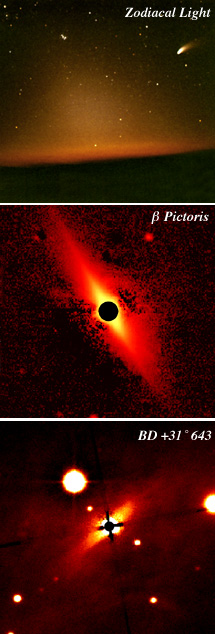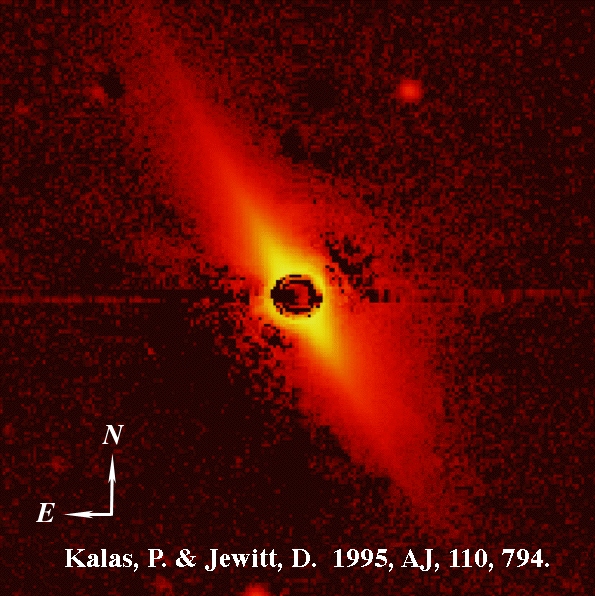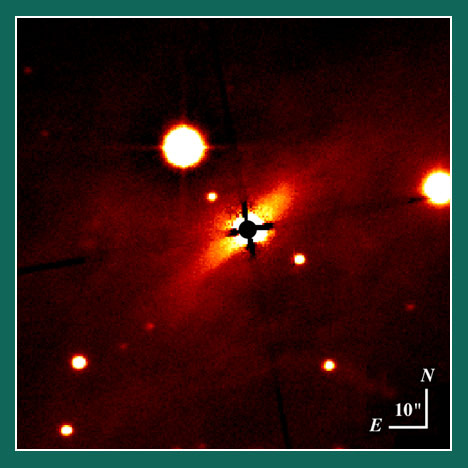 Art by Paul Kalas
Art by Paul Kalas
| ||
|---|---|---|
 |
 |
|
| Origin | Comet | Jewitt |
Our own sun possesses a tenuous disk (the "Zodiacal Cloud") caused by dust released from active comets and colliding asteroids. Beta Pictoris and BD+31 643 are other examples. In these stars, the dust lifetime is less than the age of the star, indicating that the dust has been recently created.
Possible mechanisms for dust production include collisional grinding of asteroids and comets in unseen Kuiper Belts, and ejection of dust from star-grazing comets.
